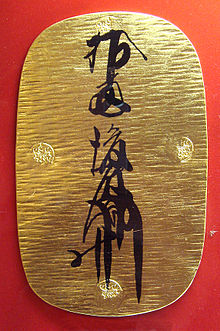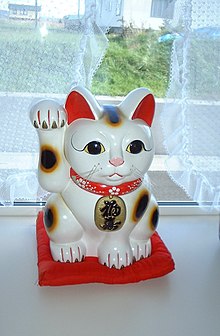Ōban
You can help expand this article with text translated from the corresponding article in Japanese. Click [show] for important translation instructions.
- View a machine-translated version of the Japanese article.
- Machine translation, like DeepL or Google Translate, is a useful starting point for translations, but translators must revise errors as necessary and confirm that the translation is accurate, rather than simply copy-pasting machine-translated text into the English Wikipedia.
- Consider adding a topic to this template: there are already 3,678 articles in the main category, and specifying
|topic=will aid in categorization. - Do not translate text that appears unreliable or low-quality. If possible, verify the text with references provided in the foreign-language article.
- You must provide copyright attribution in the edit summary accompanying your translation by providing an interlanguage link to the source of your translation. A model attribution edit summary is
Content in this edit is translated from the existing Japanese Wikipedia article at [[:ja:大判]]; see its history for attribution. - You may also add the template
{{Translated|ja|大判}}to the talk page. - For more guidance, see Wikipedia:Translation.


An Ōban (大判) was a monetary ovoid gold plate, and the largest denomination of Tokugawa coinage. Tokugawa coinage worked according to a triple monetary standard, using gold, silver and bronze coins, each with their own denominations.[1]

The first Oban – Tenshō Ōban (天正大判) – were minted by the Gotō family under the orders of Hideyoshi in 1588.[2]
The Tenshō Ōban was equivalent to ten Ryōs, or ten Koban (小判) plates, with a weight of 165 g.
Notes
References
- Mark Metzler (2006). Lever of empire: the international gold standard and the crisis of liberalism in prewar Japan. Vol. 17 of Twentieth Century Japan: The Emergence of a World Power. University of California Press. ISBN 0-520-24420-6.
- v
- t
- e
Japanese currency (pre-yen)

- Currency Museum (Japan)
- List of Japanese cash coins by inscription
- List of Japanese coinage patterns
- Mother coin
- Nagasaki trade coins
- Numismatic charm
- Momme (unit)
- Yen currency

| Pre-Edo |
|
|---|---|
| Edo |
|
| Multi |
|
- Edo period scrip
- Hatamoto
- Negotiable instrument
- Rice stamps














